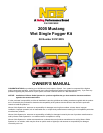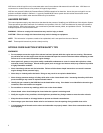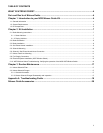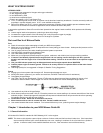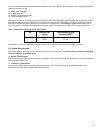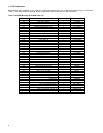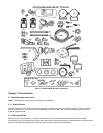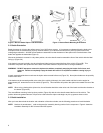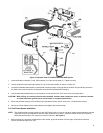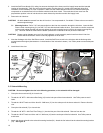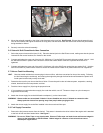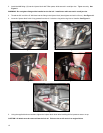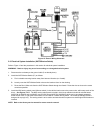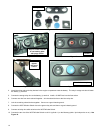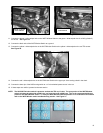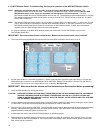NOS nitrous oxide is legal for use in most states when used in accordance with state and local traffic laws. NOS does not
recommend or condone the use of its products in illegal racing activities.
NOS has not pursued California Air Research Board (CARB) exemptions for these kits, hence, they are not legal for use on
pollution-controlled vehicles in California. A correctly installed NOS nitrous system should not alter the emission control
performance of your vehicle under standard EPA test cycle conditions.
HAZARDS DEFINED
This manual presents step-by-step instructions that describe the process of installing your NOS Nitrous Oxide Injection System.
These procedures provide a framework for installation and operation of this kit. Parts are referenced by name and number to
avoid confusion. Within the instructions, you are advised of potential hazards, pitfalls, and problems to avoid. The following
examples explain the various hazard levels:
WARNING! Failure to comply with instructions may result in injury or death.
CAUTION! Failure to comply with instructions may result in damage to equipment.
NOTE: This information is important, needs to be emphasized, and is set apart from the rest of the text.
HINT: These special instructions provide a handy work tip.
NITROUS OXIDE INJECTION SYSTEM SAFETY TIPS
WARNINGS
¾ Do not attempt to start the engine if the nitrous has been injected while the engine was not running. Disconnect
the coil wire and turn the engine over with the throttle wide open for several revolutions before attempting to start.
Failure to do so can result in extreme engine damage.
¾ Never permit oil, grease, or any other readily combustible substances to come in contact with cylinders, valves,
solenoids, hoses, and fittings. Oil and certain gases (such as oxygen and nitrous oxide) may combine to produce
a highly flammable condition.
¾ Never interchange nitrous and fuel solenoids. Failure to follow these simple instructions can result in extreme
engine damage and/or personal injury.
¾ Never drop or violently strike the bottle. Doing so may result in an explosive bottle failure.
¾ Never change pressure settings of safety relief valve on the nitrous bottle valve. Increasing the safety relief valve
pressure settings may create an explosive bottle hazard.
¾ Identify the gas content by the NOS label on the bottle before using. If the bottle is not identified to show the gas
contained, return the bottle to the supplier.
¾ Do not deface or remove any markings, which are on the nitrous bottle.
¾ Nitrous bottle valves should always be closed when the system is not being used.
¾ Notify the supplier of any condition, which might have permitted any foreign matter to enter the valve or bottle.
¾ Keep the valves closed on all empty bottles to prevent accidental contamination.
¾ After storage, open the nitrous bottle valve for an instant to clear the opening of any possible dust or dirt.
¾ It is important that all threads on the valves and solenoids are properly mated. Never force connections that do
not fit properly.
2



